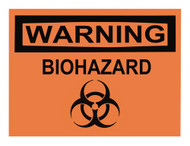How Dentists Prevent Cross Contamination Infections
Posted by Dental Didactics CE on Jul 11th 2022
The Importance of Dental Infection Control Protocols
The primary object of any dental treatment is to: First do no harm. A foundational aspect of that mandate is to maintain the highest levels of dental infection control to prevent cross-contamination in the dental environment. With the advent of the Covid-19 pandemic this has received even more emphasis. Dental infection control is a system of protocols that protect patients and staff members from becoming ill from microorganisms potentially spread by other patients or staff within the dental office. These protocols operate on many levels, but some of the major components utilized in dentistry to prevent cross contamination infections are:
- Preventing access to the office for staff and patients with active illness (staff and patients to remain at home if symptomatic)
- Screening of staff and patients for symptoms (including taking temperature) upon entering dental office
- Patients and staff to quarantine/isolate if ill
- No non-essential visitors allowed in dental office (minors may be accompanied by an adult)
- Waiting rooms to remain empty and without potential sources of cross contamination (magazines, etc.)
- Masking for all staff and patients within the dental office unless being actively treated
- Proper infection control masks, gowns, gloves, shields, head caps, etc. worn by all clinical staff
- Proper sterilization of all dental instruments for each individual patient
- Continual monitoring of autoclaves/sterilizers for effective sterilization
- Disposable instruments and items used whenever possible for treatment
- Air filtration systems in all treatment areas
- Proper use of disinfecting sprays and wipes to maintain all office surfaces
- High speed suction utilized for treatment to reduce aerosols
- Use of filtered/sterilized water in dental carts and treatment units
- Draping and shielding of patients during surgical procedures
- Plastic barrier coverings on all treatment chairs changed after each patient
- All needles and sharps disposed of in approved containers that prevent access
- Pre-operative peroxide and antimicrobial rinses for every patient to reduce microorganisms before treatment
- Strict adherence to all CDC and OSHA standards
- Ongoing staff continuing education in Dental Infection Control and OSHA standards

